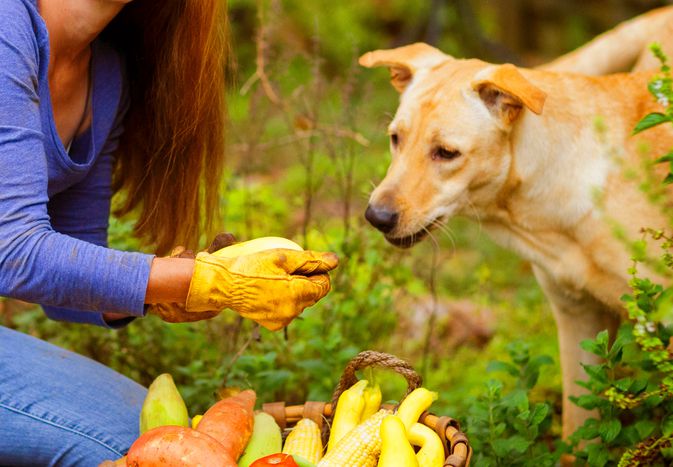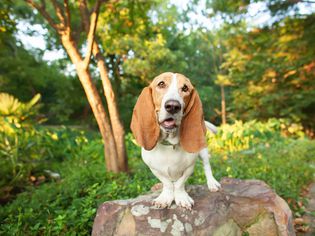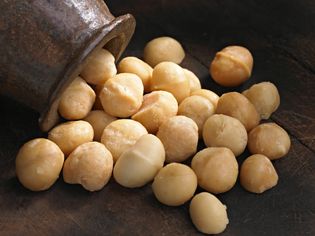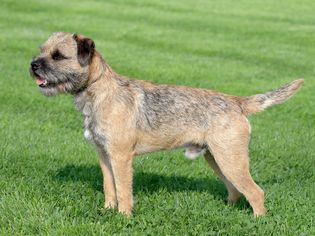The Jack-A-Poo is a small-to-medium-sized hybrid dog breed developed in the US by breeding a Jack Russell terrier with a toy or miniature poodle. A Jack-A-Poo’s medium-length coat can come in white, black, brown, gray, or blue and is usually wavy or curly, depending on which parent’s traits are more dominant. While no breed is entirely hypoallergenic, the Jack-A-Poo may shed less, thanks to their poodle lineage.
We talked with Grant Little, DVM, a veterinarian at Arlington Pet Hospital in Arlington, Nebraska, and a pet health expert on JustAnswer Pets to learn everything potential pet parents should know about the characteristics, care needs, and health concerns of the Jack-A-Poo.
Breed Overview
GROUP: Hybrid
HEIGHT: 10 to 16 inches
WEIGHT: 13 to 35 pounds
COAT: Curly or wavy; medium length
COAT COLOR: May be white, black, brown, gray, or blue
LIFE SPAN: 10 to 15 years
TEMPERAMENT: Friendly, loyal, intelligent, energetic, lively
HYPOALLERGENIC: Yes
ORIGIN: United States
Characteristics of the Jack-A-Poo
Jack-A-Poos are commonly described as affectionate, alert, and full of energy. Thanks to the intelligence of both Jack Russells and poodles, Jack-A-Poos are quick learners and generally respond well to training, though they can occasionally be a bit stubborn.
Their friendly nature means they tend to mesh well with children and other pets, especially when they’re socialized early on. However, because of their parent breeds' hunting backgrounds, Jack-A-Poos may have a heightened prey drive, making careful introductions to cats and other small animals essential.
Overall, Jack-A-Poos are social, curious dogs that thrive on attention and mental stimulation, best suited for households that can meet their energetic and playful needs.
| Affection Level | High |
| Friendliness | High |
| Kid-Friendly | High |
| Pet-Friendly | High |
| Exercise Needs | High |
| Playfulness | High |
| Energy Level | High |
| Trainability | High |
| Intelligence | High |
| Tendency to Bark | Medium |
| Amount of Shedding | Low |
History of the Jack-A-Poo
The Jack-A-Poo is a relatively new hybrid breed, developed in the United States during the designer dog boom that began in the late 20th century. As with many “designer” crossbreeds, the goal was to combine the desirable traits of two purebred dogs.
Both parent breeds have hunting origins: poodles were originally bred in Germany as water retrievers, while Jack Russell terriers were bred in England to hunt foxes. Although Jack-A-Poos themselves are primarily companion dogs, they may still carry strong instincts for chasing or retrieving due to their heritage.
The American Kennel Club (AKC) does not currently recognize this hybrid as an official mixed breed.
Jack-A-Poo Care
Taking care of a Jack-A-Poo involves meeting their exercise, grooming, and training needs, all of which are vital for keeping this breed happy and healthy. Below, we’ll discuss the key areas of Jack-A-Poo care to ensure your furry family member thrives.
Exercise
“Jack Russells are usually very active, one of the most active breeds around,” Little says. Poodles tend to have a calmer temperament, so a Jack-A-Poo’s energy level typically falls somewhere in between, he adds.
Provide your Jack-A-Poo with about an hour of daily activity, whether through walks or playtime in the yard, Little says. “If you can do morning and evening walks, that would be the best result to stay on top of the high energy.”
You can also try the following activities to keep your Jack-A-Poo physically active and mentally engaged:
- Agility
- Puzzle toys
- Snuffle mats
- Trick training
Grooming
A Jack-A-Poo’s grooming needs will depend on the type of coat they inherit from Mom and Dad. If they have a curly, poodle-like coat, frequent brushing—several times a week—is needed to prevent matting. For those with a wavy coat, brushing once a week is usually enough.
When it comes to professional grooming, Little notes poodles typically need grooming every four to eight weeks, but a Jack-A-Poo may require less frequent grooming, depending on their coat type.
Routine grooming for your Jack-A-Poo should also include trimming nails (about once a month), cleaning their ears (as needed), and brushing their teeth (ideally daily).
Training
Both parent breeds—the Jack Russell and poodle—are highly intelligent, making Jack-A-Poos quick learners who generally respond well to training, Dr. Little says. Always use positive reinforcement techniques, which entails rewarding desired behavior with treats, praise, and play.
Due to their stubborn streak, especially from the Jack Russell side of the family, training should be consistent and begin at an early age—ideally, as soon as they’re brought home as a puppy. Early socialization is also key to help them develop well-rounded behavior and adjust to different environments and situations.
Common Health Problems
Jack-A-Poos can be susceptible to hereditary health problems commonly seen in both Jack Russells and poodles, including:
- Epilepsy
- Skin allergies
- Hypothyroidism
- Addison’s Disease
- Pancreatitis
- Eye disorders, such as glaucoma and cataracts
With that in mind, Little says that overall, the Jack-A-Poo isn’t a breed prone to many routine medical issues. Still, it’s important to bring your Jack-A-Poo in for a yearly veterinary checkup, even if you don’t notice any symptoms.
Diet and Nutrition
To ensure your pup receives adequate nutrition, choose a complete and balanced dog food that meets the nutritional standards established by the Association of American Feed Control Officials (AAFCO).
Typically, feeding your dog two meals a day is recommended in order to keep their energy levels steady. You can feed your Jack-A-Poo dry kibble, wet food, or a mix of both. If feeding kibble, choose an option made for small- or medium-sized dogs (depending on the size of your Jack-A-Poo). Consult with your vet to ensure they get the right portions and nutrients for their specific needs.
Also, be sure to provide your dog with fresh, clean water daily.
Where to Adopt or Buy a Jack-A-Poo
Buying a Jack-A-Poo from a breeder can vary in price, depending on the breeder, location, and lineage of the parents. If you’re purchasing from a breeder, always do your due diligence to make sure the breeder follows ethical breeding practices, provides health screenings, and offers a clean, safe environment for the dogs.
You can also check shelters and rescues to see if there are any Jack-A-Poos for adoption. Adoption fees vary from organization to organization, but typically range from $25 to $125 at shelters and $100 to $300 or more at rescues. Adopt a Pet and Petfinder are good online databases for searching for adoptable Jack-A-Poos.
Jack-A-Poo Overview
The Jack-A-Poo is an energetic, intelligent hybrid breed that’s small-to-medium in size. Ideal for active families, they’re affectionate companions that require ample mental and physical stimulation.
Jack-A-Poos have a high prey drive and a tendency to wander, so it's best to keep them on a leash when outside. They’re also highly social dogs that love spending time with their human family, meaning they may bark in frustration if left alone for extended periods.
Pros of the Jack-A-Poo
- Highly intelligent and quick to learn
- Affectionate and great for active families
- May have lower shedding coats, making them more suitable for allergy-sensitive homes
Cons of the Jack-A-Poo
- High energy levels require regular exercise and stimulation
- Can have a stubborn streak, especially during training sessions
- Has a prey drive and a tendency to wander
More Dog Breeds and Further Research
Before deciding to bring a Jack-A-Poo home, do plenty of research to determine if they’re a good fit for your lifestyle. To gather information, search online and talk with Jack-A-Poo pet parents, reputable breeders, rescue groups, and veterinary professionals.
If you’re interested in similar breeds, check out:
- Shih-Poo
- Poochon
- Yorkiepoo
- Are Jack-A-Poos good family dogs?
Yes, Jack-A-Poos make excellent family dogs, especially for active households. When properly socialized, they’re affectionate, playful, and great with children and other dogs. Their intelligence and energy level make them entertaining companions for families who can keep up with their exercise needs.
Are Jack-A-Poos good apartment dogs?Jack-A-Poos can adapt to apartment living, but their high energy levels mean they need plenty of daily exercise and mental stimulation. Regular walks, playtime, and puzzle toys will help keep them happy in smaller living spaces. However, they thrive best in homes where they have access to outdoor space for regular activity.
Do Jack-A-Poos shed a lot?Jack-A-Poos tend to shed less than other breeds, especially if they inherit more of their poodle parent’s low-shedding coat. Regular brushing helps further minimize shedding and keeps their coat healthy, particularly for those with a poodle-like coat.








